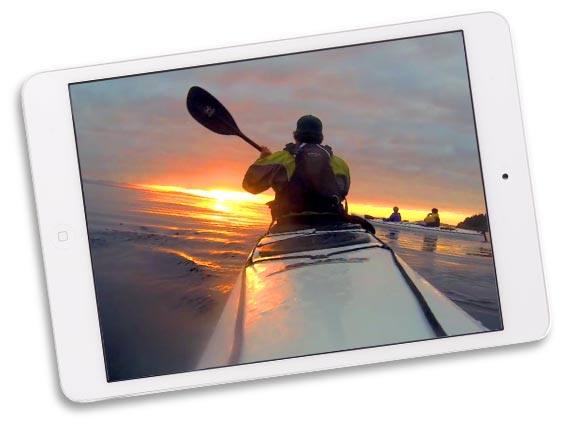Discovery Sea Kayaks is a founding member of the San Juan Island Kayak Association. We highly recommend selecting a company from the list of association members. We have made a commitment to adhering to all guidelines and regulations to help our orca survive.
The association was formed when a few island kayaking companies came together to create whale- and wildlife-watching guidelines. The goal of these guidelines is to help the commercial kayak industry protect our wildlife resources.
Our Southern Resident Killer Whales were granted protection under the Endangered Species Act in 2005. Since then there has been a decline in this killer whale population for a few known reasons:
- Prey Availability: Southern Resident Killer whales specialize in eating fish, primarily Chinook (King) Salmon. The stocks of King Salmon have been drastically reduced due to loss of spawning habitat, overfishing, and other reasons yet to be completely understood. Fewer fish to eat has been a significant stressor for our resident killer whales. Research has found a correlation between fewer King Salmon in the area and a reduced number of whale births as well as with less successful rearing of young whales to adulthood.
- Sound: As our world has modernized there has been an increase in traffic everywhere and the sea is no different. The region has been experiencing an increase in boat traffic, both commercial and pleasure craft. The increase of noise in the ocean environment has a negative impact on animals that feed acoustically such as orca whales. Resident killer whale use sonar, also known as echolocation, to forage for salmon. Reduced stocks of salmon combined with an environment that is now much louder means more difficult foraging with less success.
- Toxins: Human ingenuity has led to amazing changes, but some innovations came at an unforeseen cost. Many chemicals such as DDT, PBDE, and PCB are found in very high levels in the tissues of our resident orcas. All of these chemicals have harmful physiological effects on the whales, especially during times of food shortage.
These and other reasons have led to the creation of laws and guidelines to help protect our whales from further impact.
San Juan island kayak association guidelines
- Commercial kayak tours shall follow all local, state, and federal laws and guidelines governing behavior around killer whales and other wildlife.
- Commercial kayak tours will not intentionally position themselves or paddle into the path of killer whales.
- When killer whales are approaching, commercial kayak tours will make their way to the nearest shore, to avoid the potential path of killer whales.
- When killer whales are present and at least 300 yards offshore, commercial kayak tours will operate within 100 yards of shore to avoid the potential path of killer whales.
- When killer whales are present, commercial kayak tours will stop paddling and raft up as close to shore as possible. Commercial kayak tours will avoid headlands when deciding where to raft up, in order to avoid being in the potential path of killer whales.
- If commercial kayak tours, while following SJIKA guidelines find themselves within 300 yards of killer whales, they shall immediately raft up and stop paddling until the whales have passed.
- When commercial kayak tours are stopped at public beaches, they shall not launch with the intention of placing themselves in the path of or within 300 yards of killer whales. The best practice in this situation would be to view whales from shore.
- Commercial kayak tours shall avoid haul-out areas for seals and other marine mammals whenever possible. Tours shall make wide arcs of 100 yards or greater to avoid disturbing marine mammals.
- Commercial kayak tours shall maintain 100 yards or greater from bird nesting sites.
- Commercial kayak tours will stay 200 yards away from National Wildlife Refuges.
- There are sensitive times of the year for harbor seals and nesting birds. During these times, tours will use extra caution and increase viewing distances appropriate to the animals.
- When approaching wildlife areas, guides shall place themselves as the closest kayak to the wildlife to assure proper distances are maintained.
- All commercial kayak tours shall educate their guests on SJIKA guidelines prior to launching.
- SJIKA member kayak tour companies agree to visibly identify themselves as members of the SJIKA, so that they may be identified as setting a standard for wildlife viewing.
It is unlawful to approach within 300 yards of killer whales and be within 400 yards of the path of killer whales.






